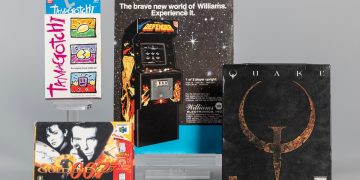The Apple Vision Pro, priced at a steep $3,500, is still struggling to gain traction. Despite boasting top-notch visuals and exceptional hand tracking capabilities in the VR realm, the initial buzz surrounding it has almost fizzled out within just a few months of its launch. A large part of this waning interest can be attributed to its exorbitant price tag. So, what could Apple do to bring that cost down and make it a viable contender against the more affordable Meta Quest 3? The answer might involve stripping away all the features that make the Vision Pro stand out.
Apple’s team at their headquarters is facing a challenge as they work on creating a more affordable version of the Vision headset, which is anticipated for release next year. According to Mark Gurman from Bloomberg, this new device could range from $1,500 to $2,000. Gurman outlines several ways Apple might slash the cost for end-users, one of which involves axing the EyeSight exterior display that mirrors the user’s eyes. If Apple had initially done away with this non-essential feature, it could have been a win-win by balancing the price and features from the get-go.
The cheaper version of the Vision headset is known as N107 for now. Apple is considering using a less powerful chip compared to the M2 chip in the Vision Pro, even if that high-end headset already taxes the CPU to its limits. They might also scale back on the external passthrough features and narrow the field of view, but at that juncture, it begs the question: Is the new Vision headset still distinct from the $500 Quest 3?
There are some even more concerning options on the table. According to Bloomberg’s insider sources, Apple has toyed with the idea of requiring the cheaper Vision headset to be tethered to an iPhone or Mac. Similar to the $1,800 Spacetop G1 and XReal’s Beam Pro, these devices leverage extra power from a connected device. The trade-off is that those glasses are considerably lighter than a full-fledged headset. One notable downside of the Vision Pro was its wired, external battery pack, so adding more cables would certainly dent the functionality of the next Vision headset.
Looking forward, a new iteration of the Vision Pro is slated for 2026, under the codename N109. This upcoming device might focus on enhancing comfort and processing power, building on what is already one of the market’s best-looking premium headsets—though its price point remains out of reach for many buyers.
Apple, however, is not backing down on its ambitions in augmented reality. Gurman notes that the company is still actively hiring for its VR unit, despite analysts predicting a dip in Vision sales expectations for 2025. The long-term goal, aligned with Tim Cook’s vision, is developing a fully immersive AR experience via glasses, although insiders believe we’re still years away from that reality.
While the Meta Quest 3 continues to offer a more attractive deal for now, Meta seems to be pivoting attention towards products like the Meta Ray-Bans after their unexpected popularity surge.
Despite some of the significant advances and updates to visionOS unveiled at WWDC, these developments haven’t sparked renewed interest in Apple’s inaugural VR headset. Several hurdles, such as comfort limitations and the hefty price, make it a tough sell for the average consumer, especially when many find laptops and phones to fulfill their entertainment and work needs sufficiently. Connecting the headset to these external devices might only highlight its role as a supplementary gadget compared to more portable options you can stash in your bag or pocket.










![[PS5] Review of Lost Records: Bloom and Rage – Tape 2 [PS5] Review of Lost Records: Bloom and Rage – Tape 2](https://www.intergamerz.com/wp-content/uploads/2025/04/Complimentary-Game-Lost-Records-Bloom-and-Rage-PS5-Giveaway-North-360x180.jpg)






















![[Industry Direct] PHI Studio & Agog Invite Applications for a Four-Week Residency for Immersive Artists [Industry Direct] PHI Studio & Agog Invite Applications for a Four-Week Residency for Immersive Artists](https://www.intergamerz.com/wp-content/uploads/2025/05/Industry-Direct-PHI-Studio-Agog-Invite-Applications-for-a-360x180.jpg)












